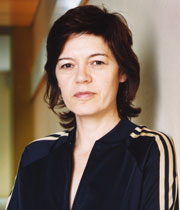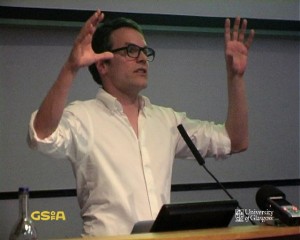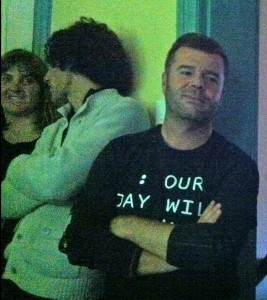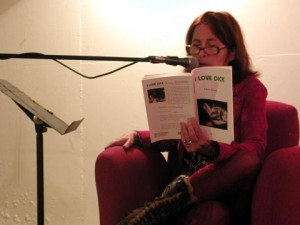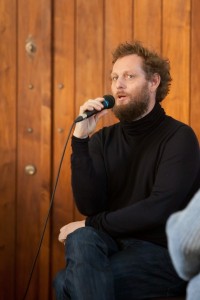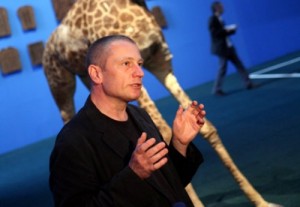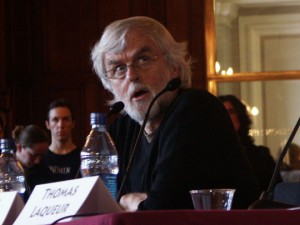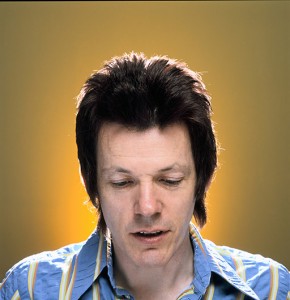by Jonathan Nichols & Hannah Mathews
JN: I was a bit disappointed with the Ute Meta Bauer talk last week. It was interesting to hear about her choices and curatorial influences but not much of an insight into the ‘why’ behind her preferences and ideas. It would have been interesting to hear about her current work at MIT and ideas for the Royal College where she said she has authority to reorganise. She came across as more a senior management figure than a curatorial figure. Maybe she could have presented a ‘before’ and ‘after’ organisational chart of MIT for instance or spoken about her objectives for the reorganisation of the Royal College. But instead her focus was on the curatorial work she has undertaken and the influence of Dada and early Constructivism on this.
HM: I didn’t get to see this talk but I had been looking forward to it. It was the most recent public lecture given by a slew of international visitors to Melbourne over the past six months. Having such an active lecture program has been exciting. I’ve felt like I’m living in a big city again! You make a good observation though. It sounds like Ute Meta Bauer’s talk followed your usual public lecture format: chronological, explanatory, PowerPoint, Q and A. I wonder what brief she was given? Perhaps this could have inspired more interesting content. We have been presented with different formats by other speakers though, mainly artists. I’m thinking of the Austrian artist Peter Friedl who presented his lecture ‘The impossible museum’ out at Monash while he was here for the Melbourne Festival. And also Philip Brophy and his series of lectures presented on the nude as part of the recently opened Adelaide Biennial. Both were more performances that adopted the lecture format. Berlin writer Jan Verwoert’s talk in Melbourne recently was also akin to this. He kind of threw a cultural drift-net out through art, film and popular culture to illustrate a proposition.
JN: There has been TJ Clark (London/NY), Chris Kraus (NZ/NY/LA), Paul O’Neill (UK) and Olaf Nicolai (Berlin). It has been great—and I’m wondering too why the rush of blood this last six months? But I agree Verwoert is a player. Meta Bauer even commented on this as well. For me though his ‘performance’ was not so important—I saw the Melbourne lecture not the Adelaide keynote ‘Anti-material materialisms’. His conversation about trauma and art making—a mechanics of empathy—reminded me of Pierre Klossowski in essays like ‘On the collaboration of demons in the work of art’ (1981) and even some of the thinking you get in Geoff Dyer’s book Jeff in Venice, death in Varanasi (2009). (Both rare fish.) What I like most is the objectivity Verwoert seeks in the project of art making, for instance, where he says something like ‘concentrate on the hand and eyes—you don’t need to sacrifice the body every time’. It sets a different type of agenda.
HM: His use of the word ‘mandate’ struck me. If I understood correctly he was saying that artists don’t need a mandate to validate their practice and they don’t need to prove their authenticity constantly. It’s OK to have space between self and art, and it’s even better to let every piece come out and form a whole of its own accord over time rather than forming it into some resolved intention of practice. I found that understanding and generous. Funny thing is, so many artists choose to attach themselves to a mandate. Very few seem comfortable to let only their eyes and hands do the talking. Where has that come from?
JN: Wow, it’s true this word ‘mandate’ is out and about. I was in India in January and the word was used there. I’m pretty sure Verwoert is saying mandates are plain wrong-headed when it comes to art—mandates are just not part of the mechanics of an artwork. Something has shifted post-2008. The idea is that if there is a mandate in place (where an artist follows a predetermined position or entitlement) how can the ‘art’ ever overcome this determination—the artwork could only ever be subservient to these issues, offering nothing more.
And true, so many artists have attached themselves to politically acceptable mandates. It’s terrible and maybe will all come to shame.
HM: You mentioned the German artist, Olaf Nicolai, earlier. He’s a senior artist, a thoughtful and considered one. His grasp on his own practice and its relationship with the world around him is critical yet philosophical. He knows deeply, yet holds lightly. The lecture he gave on his work at the Goethe Institut in October was premised on this position. How did this sit with you in comparison say to the talk by Irish artist/curator/educator Paul O’Neill?
JN: Olaf Nicolai is pretty cool and I don’t think he’d be surprised by the sort of content Verwoert speaks about. Paul O’Neill’s curatorial dictum of ‘background/middle-ground/foreground’ scared the daylights out of the crew I sat with. But I think O’Neill knew how demeaningly tight his curatorial prescription was and I got the sense he wanted to leave well remembered in sunny Melbourne. It was way more out there and radical than what I heard from Ute Meta Bauer. Looking back, it makes me think Verwoert might say something like: ‘Paul O’Neill’s trauma is about class and poverty’.
Ute Meta Bauer, public lecture, MUMA Boiler Room Lecture Series, 21 March 2012. Jan Verwoert, ‘Breaking the chain: thoughts on trauma and transference’, MUMA Boiler Room Lecture Series, 6 March 2012 (and ‘Anti-material materialisms’, Adelaide Festival Artists’ Week, 2 March). Paul O’Neill, ‘The exhibition-as-medium, the exhibition-as-form: three principle categories of organisation: the background, the middle-ground and the foreground’, MUMA Boiler Room Lecture Series, 24 October 2011. Chris Kraus, public lecture, MUMA, 14 October 2011. Olaf Nicolai, artist’s talk, ACCA/Goethe Institut, 7 October 2011. Peter Friedl, ‘The impossible museum’, Monash University/ACCA/Goethe Institut, 19 October 2011. TJ Clark, ‘The art historian and the poet’, the Wheeler Centre, 15 June 2011. Philip Brophy, ‘Colour me dead’, Parallel collisions: 12th Adelaide Biennial of Australian Art, AGSA, 3 and 4 March 2012.
